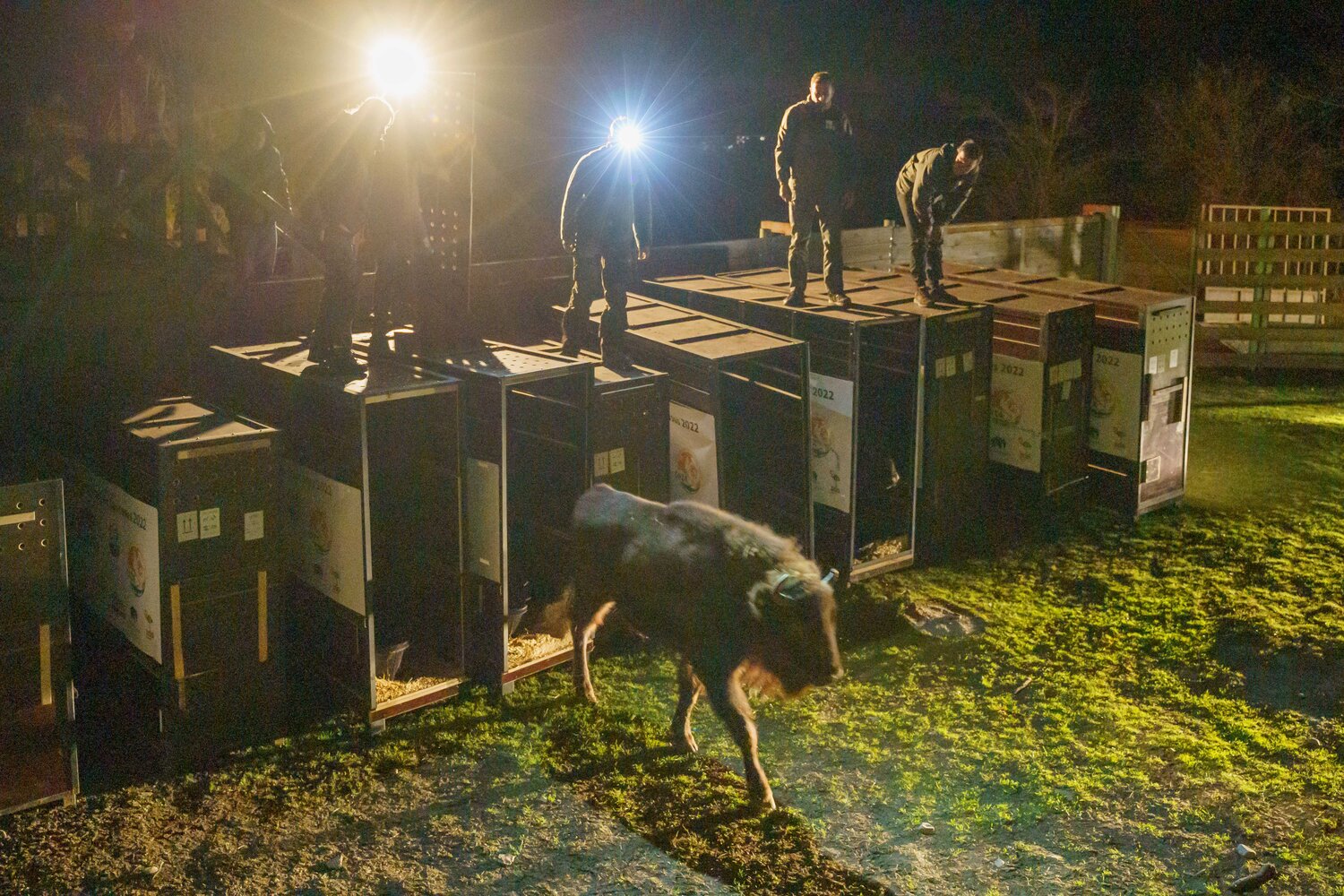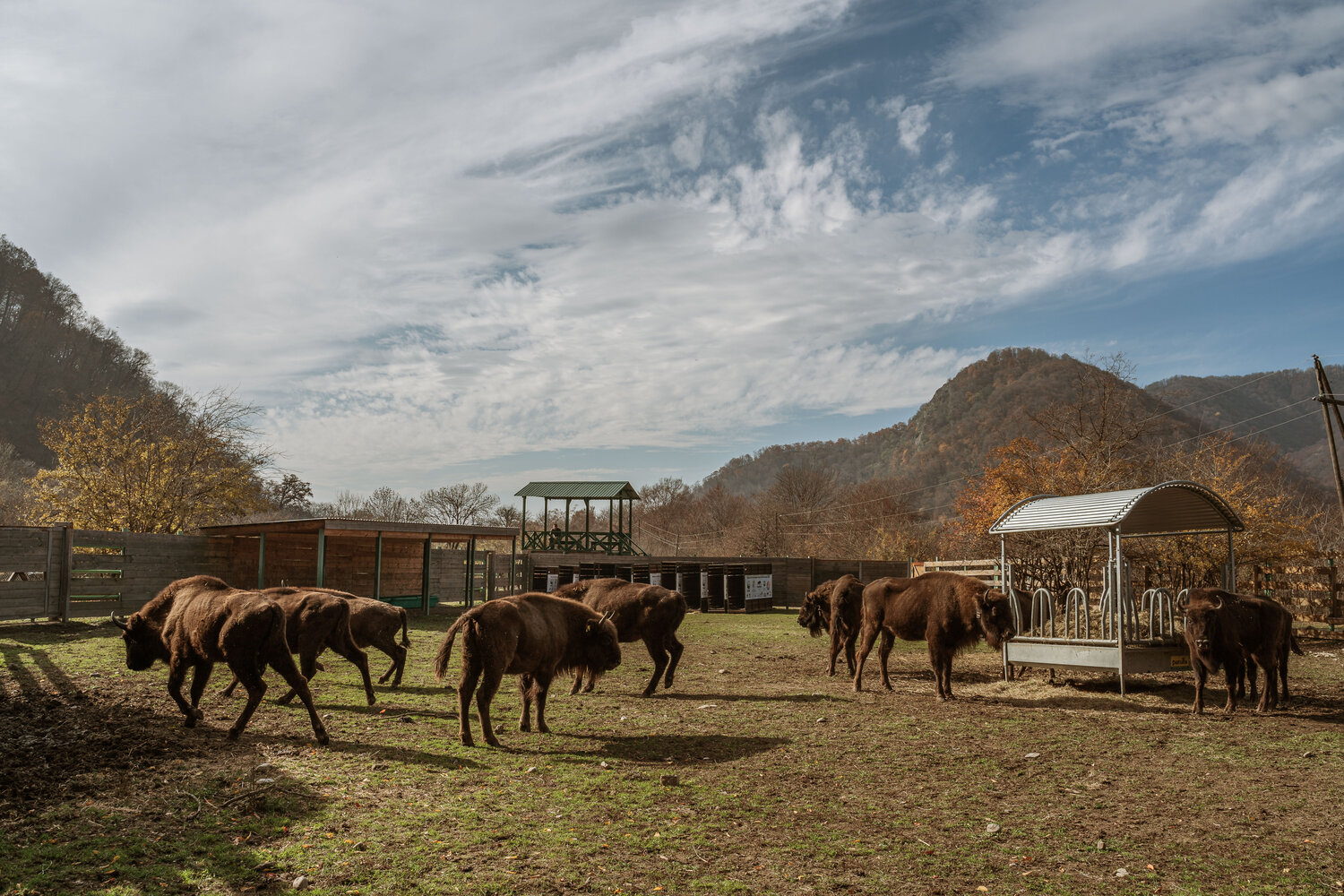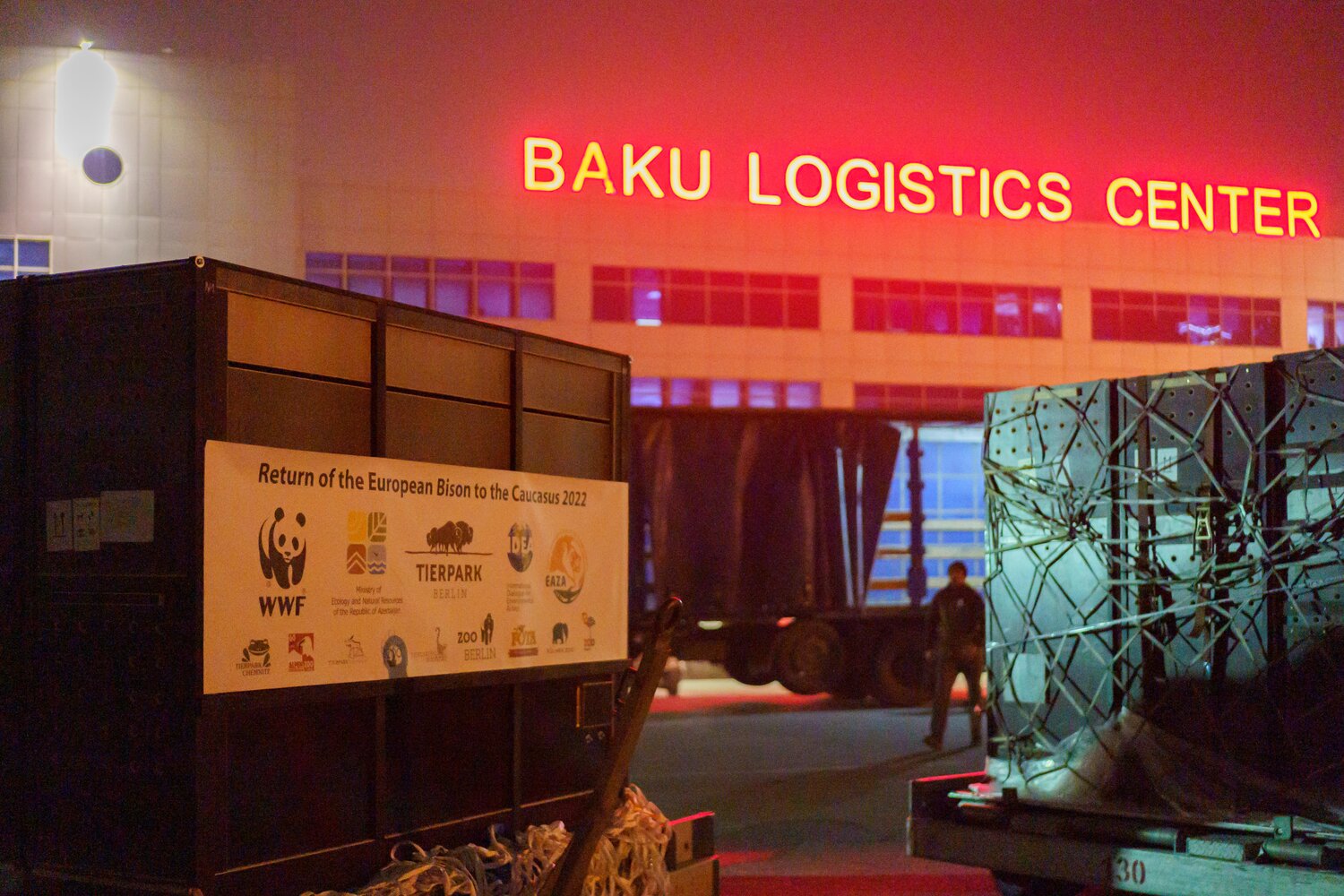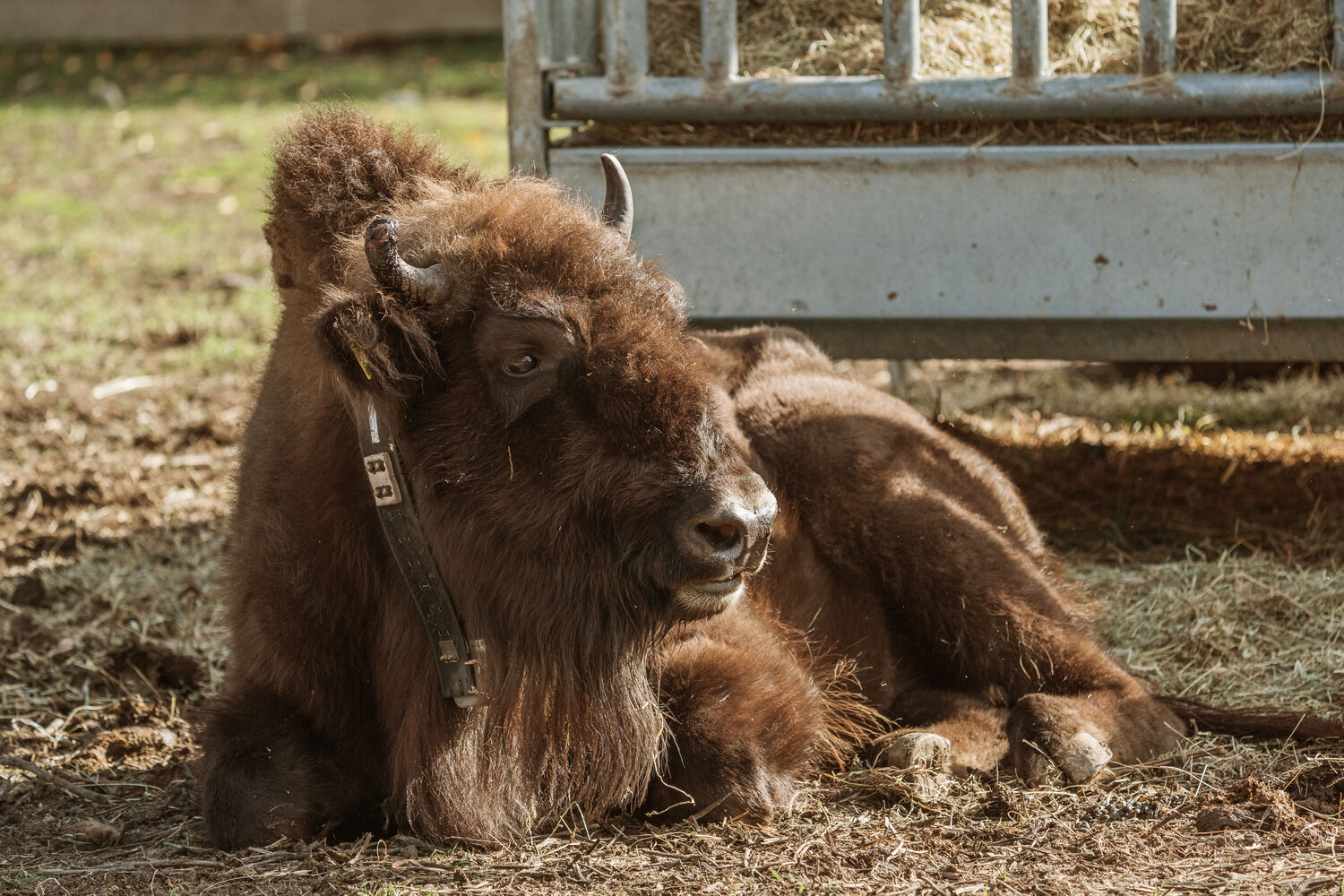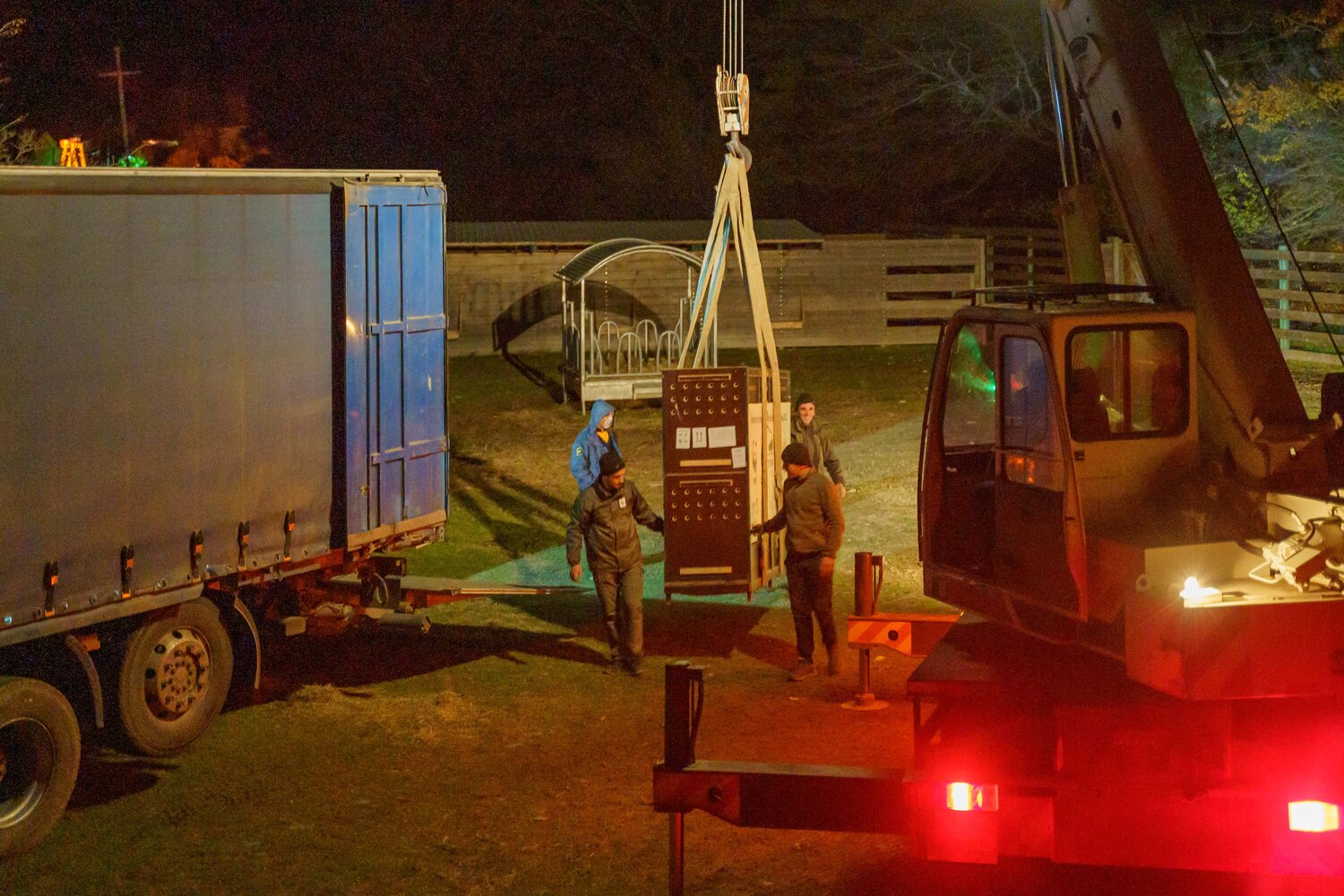Flared nostrils snort clouds of mist into the cold autumn air and big, dark eyes take in the view of their new home: the 130,508-hectare Shahdag National Park by the Greater Caucasus Mountains. This week, ten female European bison travelled from Tierpark Berlin to Azerbaijan, where they set foot in the national park for the first time yesterday at around 6 a.m. local time. Their exciting journey to the bison’s original habitat was another successful step in the recovery plan for this endangered species.
Once extinct in the wild, bison can now be found roaming through European forests once more. The story of the European bison is one of the most encouraging in modern species conservation, but action is still needed to secure a long-term future for the bovines. In recent months, therefore, European bison from Zoo Berlin and other German zoos in Chemnitz, Rostock, Bernburg, and Cologne, as well as some animals from Fota in Ireland and Plzeň in the Czech Republic, were moved to Tierpark Berlin as part of an Endangered Species Programme set up by the European Association of Zoos and Aquariums (EAZA). After the bison had spent a few months getting to know each other in Berlin, the herd was transported in a cargo plane from Frankfurt-Hahn Airport to Baku, the capital of Azerbaijan. The animals were joined on their trip by experts from the WWF and Tierpark Berlin.
“As part of the joint recovery plan for bison in the Greater Caucasus devised by Tierpark Berlin and the WWF, we are delighted to have accompanied what is now the fourth herd on their journey from Berlin to Shahdag National Park,” reports Aurel Heidelberg, Caucasus Programme Officer at WWF Germany. They will be joining 31 other bison that have been reintroduced in Azerbaijan over the past four years – including some calves that have already been born in the national park. “Since the gates to the core zone of the national park opened a year ago, wild bison are now officially living wild in Azerbaijan once more,” he adds. “A project like this is an enormous feat that can only be achieved through long-term relationships of mutual trust between international, national and local partners.” Alongside Heidelberg and animal keeper Viola Gandert, Tierpark veterinarian Anja Hantschmann ensured that the animals had everything they needed on the journey.
“The whole herd coped well with the flight to Baku and they are now in an acclimatisation enclosure, getting settled in,” explains Hantschmann. “Prior to the trip, we fitted the two bison most likely to assume the role of matriarch with GPS collars so that we can keep tabs on the herd from afar in future,” she adds. One of the tagged animals is Tingstinella, who was born at Tierpark Berlin in 2018. A Berliner through and through, she displays ideal character traits for her possible future role as herd leader: “She is dominant, big, and has already demonstrated good maternal instincts,” reports Deputy Zoological Director Dr Florian Sicks. “We had the transport crates made to measure for the different-sized animals. Also, thanks to financial support from the WWF, we were able to redesign our bison stables this year so as to provide more space for the reintroduction project."
Background – The return of the European bison
These bison were once found across large parts of Europe, but shrinking habitats and hunting meant populations were in decline as early as the 11th century. In 1927, the last wild bison was shot in the Caucasus, leaving the majestic bovines extinct in the wild. It was thanks to the presence of a few individuals kept in zoos that the European bison was saved from total extinction. In order to ensure the survival of the species, a group of European zoo directors and scientists founded the Society for the Protection of the European Bison in August 1923 at Zoo Berlin. This joint effort was the forerunner of many of today’s conservation breeding programmes for endangered species. Zoo Berlin has been home to European bison since 1872. The Tierpark has also made a considerable contribution to the species’ conservation since it opened in 1955. To date, more than 200 of the bison have been born at Berlin’s two zoos. European bison are currently classified as “Vulnerable” on the IUCN Red List of Threatened Species.
